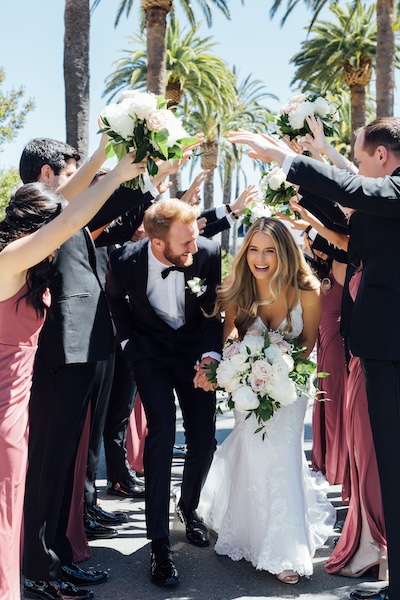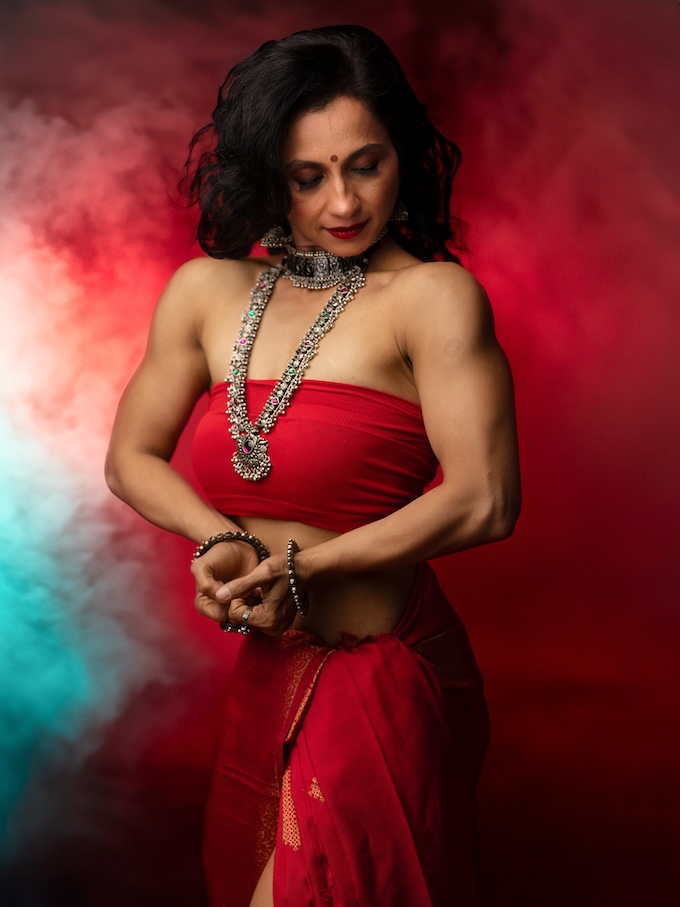5 Wedding Photographers Dish on Exceeding Client Expectations
October 18, 2016
When it comes to giving your clients your all, it takes a lot of time, effort and patience. But it’s worth it, because if your client is happy, you are happy, right? Communication is key. We asked photographers about the various ways they “talk” and take care of clients—whether it be correspondence, contractual agreements or some good old gift giving.
We Asked…
How do you prefer to correspond with clients?
Laura Murray: I like to respond to all of my initial inquiries via email—even if those inquires come from Facebook, Instagram or text message. When a client first inquires I send them an email with additional information about my services in the form of a PDF. The PDF has my pricing, imagery of my work and some frequently asked questions. The email is an invitation for further discussion as I always request that we set up a time to chat when it is convenient for them. I like to have the initial correspondence via email because I prefer to have written documentation of the wedding date, location, and the pricing that has been quoted so that we are all on the same page going into our conversation. Furthermore, a lot of my clients have busy days, so it can be tough to connect via phone initially.
I always love to schedule a time to talk via phone or in person after the initial email. I meet half my potential clients in person at my home studio space and I schedule phone calls with the other half. Quite a few of my wedding clients are not local to me, so a call is sometimes the only way that I get to know them. However, when it is possible I like to meet in person, as it is the best way to connect!
Andy Gaines: I rarely meet in person prior to the wedding due to most of my work not being local, but I Skype or FaceTime every couple at least once before the wedding. I always try and keep all “official” correspondence in email. Facebook and Instagram messages just get buried or missed too easily. But depending on each couple, I keep in touch and connect over social media and text, for sure. I’m basically happy to do whatever is easiest and most comfortable for them. If they want to chat on the phone, then no worries! Same for texting.
Katch Silva: For communication, email is still my number one. I usually have a couple of phone/Skype calls with the couple to talk specifics about the wedding/session, and to meet “face to face” (Skype). I rarely meet with the couple in person because I shoot mostly non-local weddings. I don’t like to rely on social media messaging (Instagram or Facebook messaging), because personally, messages get lost in the large number of notifications that come in through each platform everyday. I use social media to stay in touch, but mostly after the session. And texting happens more on the day, as we coordinate meeting up, but rarely happens before the actual day of the shoot.
Phillip Van Nostrand: My correspondence with a potential client is always extremely formal via email. I strongly believe in complete sentences, impeccable grammar, and thorough communication. I would only text someone if I have done business with them before and I want to get their attention faster than an email, but I always make sure important things are said via email, because my memory is terrible, and email just becomes the official landing place for final decisions.
What type of gift-giving do you do for your clients?
Laura Murray: I do send several different gifts to my clients—it is a nice touch and shows them that you care. After an initial in-person consult I give my potential clients a gift bag with the following: a magazine that has my work featured in it, chocolates, some business cards and a few printed photographs of my work. If they book me, I follow up with a little handmade ring dish with the inscription “Be glad for this moment”. A theme in my marriage and my life is to live in the present moment and to be glad for exactly where we are today! The mantra to “Be glad for this moment” is important and significant to me. I hope that my clients set it somewhere in their home and that it reminds them to slow down and take the time to enjoy their engagement.
Phillip Van Nostrand: I don’t often give photo related gifts to my clients. My love language is definitely not gifts. I’m great with attention and quality time, so I like to take my clients out to lunch or check in via text occasionally. But gifts would be something I would outsource, if I felt like they were super important. I never really worked gifting into my workflow. That being said, on the rare occasion when I am feeling inspired I will gift a La Rousse Photo Box with about 100 prints of wedding highlights to my couples. I did this for my sister, the day after she got married. I photographed her wedding last year, and that night went home and edited 100 of the best photos from the day. The next day I went and ordered same-day prints in my town and gave her a box of prints that evening. She told me she carried it around in her purse/bag for weeks afterwards.
Amanda Schwinghammer: I send every client who books with me a welcome care package with a fun little tote, some tea, and an informative yet fun guide to wedding planning, information about photography and how to help make their images the best they could be. For past/current clients who are particularly rooting for me and send weddings my way, I usually send them a gift card to a coffee place or restaurant in their area as a thank you.
Andy Gaines: Every couple gets a “thanks for booking” gift in the post—either Champagne, cinema tickets or similar—just as a surprise a week or two after booking. I also try and send anniversary cards and prints a year or two after their big day. Plus, all my couples get unexpected things with their images: free prints, vouchers for their gallery to order products, etc.
How much do you allow yourself to work beyond what you stipulate in your contract with clients? Do you purposely under-promise and over-deliver?
Amanda Schwinghammer: I always over-deliver on hours, and especially images. My clients usually get about 120 images per hour of coverage, and they get any image that I think they would think is special. There is no reason to not give it to them to keep what I deliver low. My standard package includes up to 10 hours, but I always show up about a half hour early and stay about a half hour late. Sometimes they notice, sometimes they don’t, but for me it’s just so important to be there and feel comfortable, to not feel rushed and to not feel like a stickler with hours.
For clients who need much more than 10 hours, I always educate them and provide them with a photo timeline so they can see just when I would start and when my coverage would end. From there they can choose to add on more hours. I would never ask on the day of the wedding if they want me to stay longer and that it would cost X dollars to have me stay. It’s so important to have that conversation when the photo schedule is being made. If something unforeseen and out of their control happens and I have to stay an extra hour, then I would stay an extra hour.
Katch Silva: I under-promise and over-deliver only for a few topics: Amount of images delivered and timeline for image delivery after the session/wedding. For example, my contract says that all digital files will be delivered no later than six weeks after the wedding date, but I typically deliver images about four weeks after the wedding date. I also show lots of “sneak peeks” on social media right away, as a little unexpected surprise. I also make myself available to help the couple plan timeline and scheduling for their wedding day. I don’t stipulate anything about this in my contract, but I tell the couple that I’m always here to help with timeline and planning. We have phone calls about it, and I provide tips for them on best timelines for photography.
How do you break bad news, and what can photographers do to make good when something unexpected happens?
Amanda Schwinghammer: First, admit your fault, say you are incredibly sorry, and make sure you tell them that you will do anything possible to make sure they are happy. Depending on what type of mistake, offer free sessions, a free album, etc. There is always a way to turn around a displeased client. Unfortunately that probably involves money out of your own pocket, but it’s much better to get them back on your side than for them to bad-mouth you to their friends and family. Negative word travels faster than positive word.
Phillip Van Nostrand: I don’t have many times like this. I tend to minimize mistakes and emphasize wins. I’m a pretty optimistic person and that attitude carries over to my clients as well. If there is something that needs to be fixed or done over again, I will do it with urgency and without ego. Always.
Laura Murray: Sometimes clients will ask for requests that are beyond the scope of what is in the contract. I always like to maintain a sense of positivity no matter what they ask of me. I rarely like to tell my clients no… but it is important to not get walked on as well.
A good friend taught me once to say “Yes, BUT….” instead of just “No” to excessive client requests. No matter what is asked of you, you can always say yes! For example, they might ask you to do extra retouching that is not included in your contract. Instead of saying “No, you have not paid for that sort of retouching,” I would instead say, “Yes, I would love to make these adjustments for you, but there is an additional charge of $35/image for this sort of retouching as per our contract. However, I could edit 10 of your favorite images complimentary as a gift to you, but any additional images beyond that would be charged $35.” Or, perhaps they want you to capture the grand exit, but their coverage ends 2 hours beforehand. Instead of saying no, I would instead say, “I love grand exits! They create such fun and candid moments. Currently your coverage ends at 8 PM, however the grand exit is not until 10 PM. I would love to stay and capture it, but you would need to add an additional two hours of coverage.” Or perhaps a clients wants to pay a portion of the your fee after the wedding day, however your contract states that all payment is due prior to the wedding day. Instead of simply saying no, I would say, “I understand that you prefer to pay a portion of my fee after the wedding date. It is industry standard and my policy that all payment is collected before the wedding day. But I could certainly work with you to break the payments up into smaller groupings if that would be helpful. We would just need to make sure the final payment is due two weeks prior to your wedding day.” Keep all communications positive and have all of your rules and policies spelled out clearly in your contract.
Anything personal you want to add on how you go the extra mile for your clients, in the name of customer service? Are there any “best practices” photographers follow?
Phillip Van Nostrand: One thing I do to go the extra mile for my wedding clients is to help build their timeline for their wedding if they don’t have a planner. I also connect with them via text or meeting up about once a month leading up to their wedding. I want to connect on a personal level with all my clients. I never feel like just a vendor when I show up on the wedding day. (And whether I am shooting a wedding or working for a commercial client, I always give them a sneak peek by the end of the day. I know seeing photos the same day they are taken holds a really high value to people, especially when the rush of the shoot is still with them.)
Laura Murray: I always want my clients to feel like I went the extra mile. I never arrive on time to a wedding day. In my mind, on time is late! I always arrive 30-45 minutes early because I want my clients to feel relaxed. I use the time to say hello, to get my gear set up, and I usually start my photography a little bit early. Being early sets us up for success the rest of the day.
I am also big on giving input to the wedding day timeline. I often go back and forth with my clients on the timeline, making sure that we are all on the same page and that I am aware of all their photo requests and priorities. By having a clear timeline that reflects my shooting style I can deliver an excellent customer experience.
And then, I work incessantly for my clients all day long and I do it with a smile! At the end of the day the couple, their families, and their guests typically remark to me that I never seem to tire! And it is true—wedding days energize me and I find that having that energy is something that my clients appreciate.
And finally, clients are happiest the sooner they get their images! My contract states that I will deliver wedding photos within eight weeks. However, I almost always deliver client images within three weeks. The old adage to “under promise and over deliver” is certainly a best practice that everyone can and should implement.




